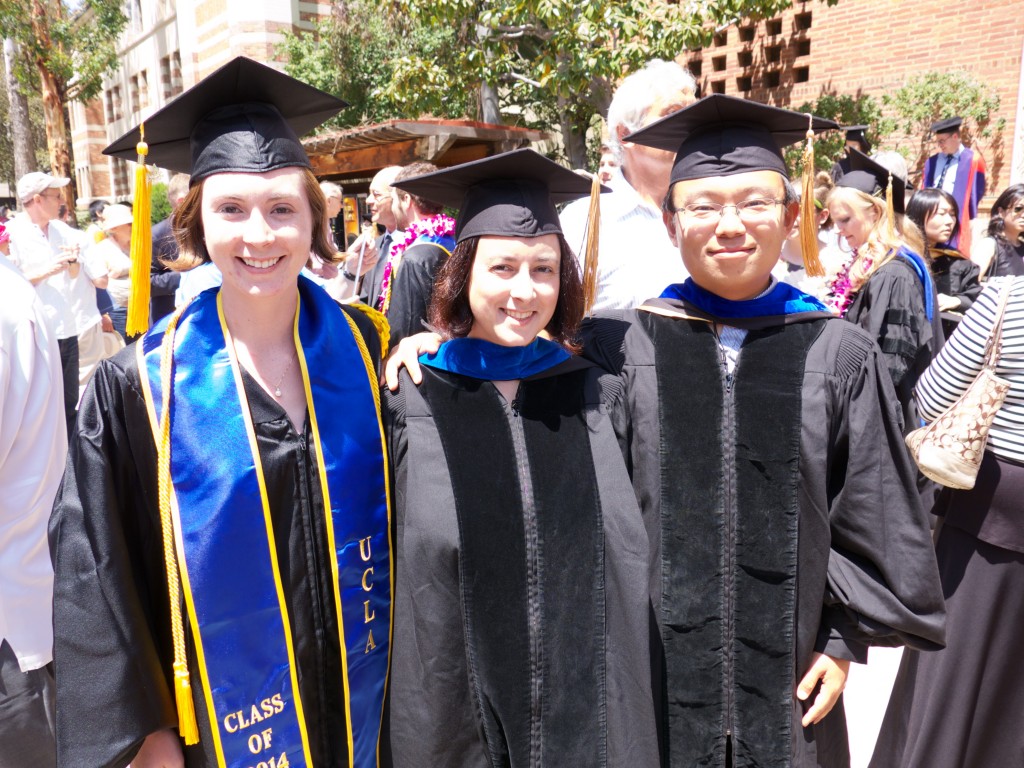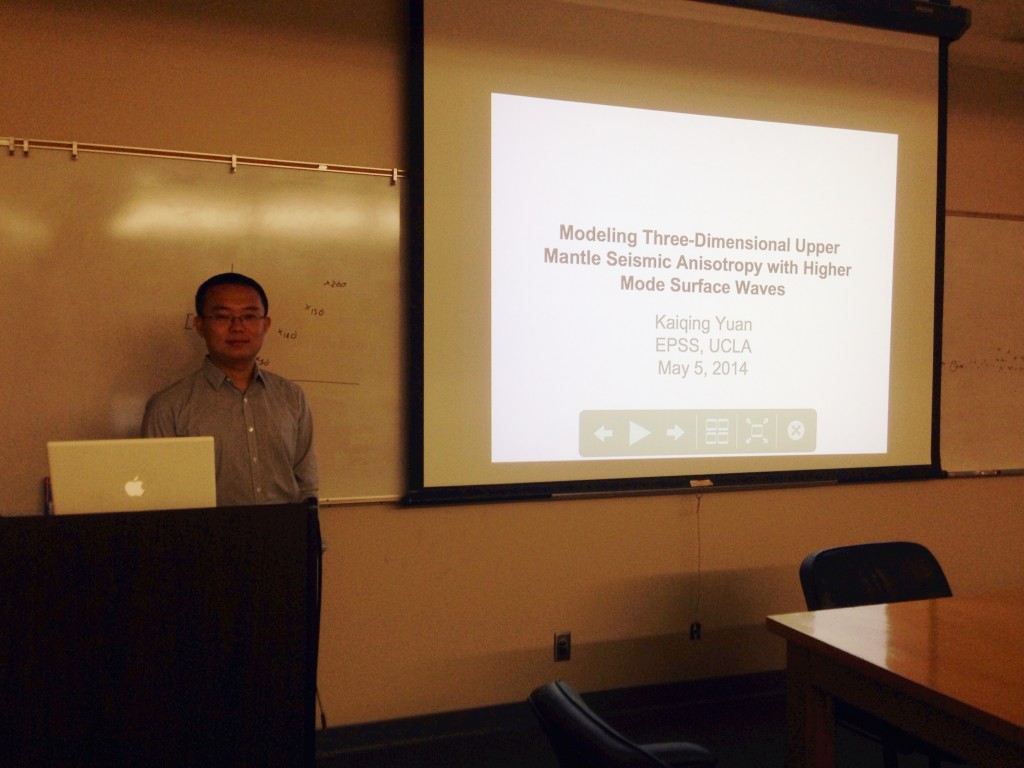The EPSS commencement ceremony took place on 14 June 2014. All of our group’s students were getting a degree: Grace Parker got a Bachelor of Science, Zheng Xing got a Masters, and Kaiqing Yuan got a PhD! More pictures here


C.B. took her ‘Earthquakes’ class to see the San Andreas fault and Vasquez Rocks
Last Friday, I said goodbye to my first graduate student, Kaiqing Yuan, who just started a postdoc in the Berkeley Seismo Lab. You will be missed, Kaiqing, but congratulations on this wonderful opportunity!
The EPSS commencement ceremony took place on 14 June 2014. All of our group’s students were getting a degree: Grace Parker got a Bachelor of Science, Zheng Xing got a Masters, and Kaiqing Yuan got a PhD! More pictures here


Dr. Kaiqing Yuan was hooded today! See more pictures here

Kaiqing Yuan successfully defended his PhD thesis today! Congratulations and thank you for being part of the team and being the first student to get a PhD in our group!

C.B. has the opportunity to present her group’s work on the Pacific LAB at the EPSS colloquium
C.B. was acknowledged as a “notable professor” in a new article, which recognizes the compelling work of professors at some of the top research universities in the U.S. The professors in this collection were all selected from schools that are ranked as having “high research activity” or “very high research activity” on the Carnegie Classification …
Our paper on 3-D global SH wave azimuthal seismic anisotropy was accepted for publication in JGR. The models are available for download
C.B. talked about the mantle transition zone and the Pacific plate at DTM. Fun and busy day meeting with staff and postdocs
